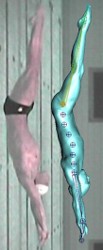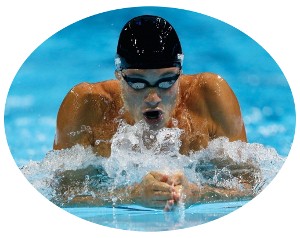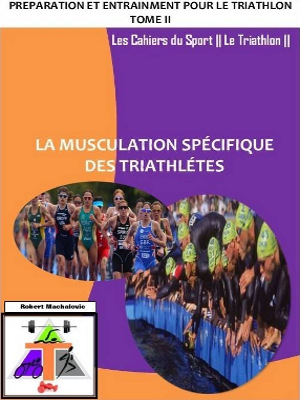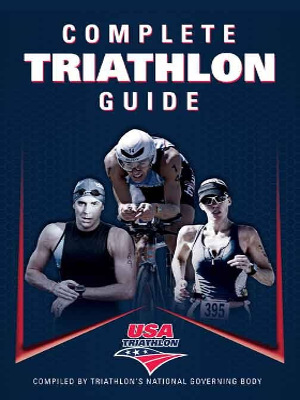
EL HAOUAT MedHassan
 Swimming is one of the oldest and basic motor skills of a human. Humans probably started to imitate animal movements (dog) to swim. There is a number of proofs which show how popular swimming was mainly in ancient Egypt, Greece and Rome. There are tens of proofs of the popularity of this sport in ancient Egypt. They are mainly statuettes or paintings on walls or vases which depict swimming humans. Sometimes, also swimming women are depicted which proves that it was one of the few sports from which women were not banned. Mainly the nobility were interested in having their children taught to swim because they took it as a part of education. There is a famous quote by Plato: "He cannot neither read nor swim." Swimming was also important in trainings of the Roman army – specially trained swimmers were used in naval battles. In Greek mythology, there is a tale about Leander who used to swim every evening to his lover Hera (and back in the morning) through the Dardanelles (approx. 1,500 m + strong current).
Swimming is one of the oldest and basic motor skills of a human. Humans probably started to imitate animal movements (dog) to swim. There is a number of proofs which show how popular swimming was mainly in ancient Egypt, Greece and Rome. There are tens of proofs of the popularity of this sport in ancient Egypt. They are mainly statuettes or paintings on walls or vases which depict swimming humans. Sometimes, also swimming women are depicted which proves that it was one of the few sports from which women were not banned. Mainly the nobility were interested in having their children taught to swim because they took it as a part of education. There is a famous quote by Plato: "He cannot neither read nor swim." Swimming was also important in trainings of the Roman army – specially trained swimmers were used in naval battles. In Greek mythology, there is a tale about Leander who used to swim every evening to his lover Hera (and back in the morning) through the Dardanelles (approx. 1,500 m + strong current).
In Rome, solders were taught to swim in Tiber River on the famous Campus Martius. They were swimming with clothes and weapons. A different chapter in history of swimming is Roman spa. However, swimming and water activities were also profaned in Rome. Apart from its purification function, Roman spa was associated with centers of vice. Gladiator water fights in a basin, so-called naumachia, can be regarded a complete downgrade of the idea. Some aspects of Roman spa had a negative influence on the perception of swimming, bathing and hygiene in general by the Christians. In the Middle Ages, human body was perceived as the tool of the Devil. Clean complexion was said to mean dirty soul. Only few people did refresh themselves in rivers or ponds. This prudery was eased only in the period of humanism. But still at that time, Comenius warned against swimming in the open air. Only further development of the society brought a change in the opinion on bathing and swimming.
Basis of Sports Training
 All activities which are part of human behavior were subject to a long-term development. Let us take throwing, which is regarded a basic motor activity, as an example. In the deep past, throwing was necessary for feeding and defense. At present, throwing has lost its importance as one of the above mentioned activities but it is involved in different sports to a great extent (e.g. athletics, handball, baseball, etc.). The task of a prehistoric hunter was to hit the target precisely to get food. The aim of a present-day athlete is to throw the javelin as far as possible. The result of the activity in both examples can be considered a performance. Performance is understood as an extent to which motor task is accomplished. With the prehistoric hunter, performance is evaluated dichotomically: hitting the target or missing and it is not restricted by any rules. In the case of the athlete, performance is evaluated following rules of the sports discipline which were set in advance, it is expressed by the length of the throw and is understood as a sports performance. An ability to achieve a given performance repeatedly is referred to as efficiency.
All activities which are part of human behavior were subject to a long-term development. Let us take throwing, which is regarded a basic motor activity, as an example. In the deep past, throwing was necessary for feeding and defense. At present, throwing has lost its importance as one of the above mentioned activities but it is involved in different sports to a great extent (e.g. athletics, handball, baseball, etc.). The task of a prehistoric hunter was to hit the target precisely to get food. The aim of a present-day athlete is to throw the javelin as far as possible. The result of the activity in both examples can be considered a performance. Performance is understood as an extent to which motor task is accomplished. With the prehistoric hunter, performance is evaluated dichotomically: hitting the target or missing and it is not restricted by any rules. In the case of the athlete, performance is evaluated following rules of the sports discipline which were set in advance, it is expressed by the length of the throw and is understood as a sports performance. An ability to achieve a given performance repeatedly is referred to as efficiency.
The aim of sports training is to achieve maximum individual or team efficiency in a selected sports discipline limited by rules.
Reaching maximum efficiency in any activity is not possible over a day. Efficiency is conditioned by several interrelated areas. Sports training focuses on reaching maximum efficiency in motor abilities connected to a certain sports discipline. Supposed performance depends on motor ability and motor skill which are closely related to the sports discipline. Motor abilities can be described as relatively stable sets of inner genetic presuppositions needed to carry out locomotive activities. They include force, speed, endurance, coordination and flexibility. Motor abilities are manifested on the outside by sports skills. Sports skills are presuppositions needed for implementing performance in a selected sports discipline which is limited by rules. Such presuppositions are gained through motor learning. It, however, would not be possible to implement sports skills or develop locomotive abilities without motivation. Motivation is understood as an inner incentive to carry out certain activity. The final area needed for performance implementation is represented by tactical skills. Tactics means conducting a sports competition in a purposeful way.
Multilateral Physical Development
 Athletes need multilateral physical development as a training base as well as overall physical fitness. The purpose is to increase endurance and strength, develop speed, improve flexibility, and refine coordination, thus achieving a harmoniously developed body. We expect athletes with a strong base and a good overall development to improve athletic performance faster and better than those without this foundation. In addition, such athletes will have a superior body form, which increases their self-esteem and reflects a strong personality.
Athletes need multilateral physical development as a training base as well as overall physical fitness. The purpose is to increase endurance and strength, develop speed, improve flexibility, and refine coordination, thus achieving a harmoniously developed body. We expect athletes with a strong base and a good overall development to improve athletic performance faster and better than those without this foundation. In addition, such athletes will have a superior body form, which increases their self-esteem and reflects a strong personality.
Sport-Specific Physical Development
Sport-specific development improves absolute and relative strength, muscle mass and elasticity, specific strength (power or muscular endurance) according to the sport's requirements, movement and reaction time, and coordination and suppleness. This training creates the ability to perform all movements, especially those required by the sport, with ease and smoothness.
Technical Factors
Technical training involves developing the capacity to perform all technical actions correctly; perfecting the required technique based on a rational and economical performance, with the highest possible velocity, high amplitude, and a demonstration of force; performing specific techniques under normal and unusual circumstances (e.g., weather); improving the technique of related sports; and ensuring the ability to perform all movements correctly.
.jpg) Systematic development of the individual components of sports training is a long-term dynamic process, which has a predetermined logical relation. The processes of learning and development components of sports training can be divided into three areas. Physical component is developed in the processes of morpho-functional adaptation. Technical component is learning the processes of motor learning and psychological component is shaped in the processes of psychosocial interaction. A special place is occupied by tactical component which interferes into processes of both motor learning and psycho-social interaction.
Systematic development of the individual components of sports training is a long-term dynamic process, which has a predetermined logical relation. The processes of learning and development components of sports training can be divided into three areas. Physical component is developed in the processes of morpho-functional adaptation. Technical component is learning the processes of motor learning and psychological component is shaped in the processes of psychosocial interaction. A special place is occupied by tactical component which interferes into processes of both motor learning and psycho-social interaction.
In very simplified form we can talk about the process of morpho-functional adaptation to increased physical activity (the creation of energy reserves and energy distribution, the activity of various organs, etc.). At the same time you need to learn many new moves, but their acquisition is necessary to rely on principles of motor learning. Psycho-social aspects of sports training interaction are determined by real relationships of the participants in training and competition depending on their individual psychic condition. Sports training as a part of morpho-functional adaptation.
The increase in performance generally is related to the achievement of adaptive changes in the organism. Adaptive changes can be achieved by repeated application of Exercise load. The way to achieve adaptive changes in the organism is a systematic repetition of Exercise load. Repeated loads refer to as adaptation stimulus. The principle of adaptive changes is the axis: homeostasis → adaptation stimulus (load) → adaptation.
If adaptation stimuli are applied properly, training can be expected to have accumulative effect. If motor activity is carried out in such a way that it evokes desirable current change of human functional activity, and consequently long-term, structural and psycho-social changes, it can be referred to as load.
Example : If I run every other night in the park without much planning and adherence to the principles of sports training, sooner or later pass the same track may be quicker, but also feeling more relaxed, which is a simplified functional change. Psychosocial changes in this case represent my daily effort and responsibility run out every night out.
 Metabolic specificity of exercise and training is based on an understanding of the transfer of energy in biological systems. Efficient and productive training program can be designed through an understanding of the process of energy repletion for muscle work of various inensity and duration of load.
Metabolic specificity of exercise and training is based on an understanding of the transfer of energy in biological systems. Efficient and productive training program can be designed through an understanding of the process of energy repletion for muscle work of various inensity and duration of load.
Terminology
- Bioenergetics or the flow of energy in a biological system, concerns primarily the conversion of macronutrients-carbohydrates, proteins and fats, which contain chemical energy.
- Energy emerges with the decomposition of high-energy bonds in such macronutrients which release energy needed to carry out mechanic work. vzniká rozkladem vysoce energetických vazeb high-energy bonds v těchto makroživinách, které uvolňují energii potřebnou k vykonání mechanické práce.
- Catabolism is the breakdown of large molecules into smaller molecules, associated with the release of energy (e.g. breakdown of glycogen into glucose).
- Anabolism is opposite of catabolism. It is the synthesis of larger molecules from smaller molecules (e.g. synthesis of proteins from amino acids).
- Exegetic reactions are energy-releasing reaction and are generally catabolic (e.g. breakdown of adenosine troposphere into adenosine diphosphate).
- Endergonic reactions require energy and include anabolic processes.
- Metabolism is the total of all the catabolic or exergonic and anabolic or endergonic reactions in a biological system. Energy derived from catabolic or exergonic is used to drive anabolic or endergonics reactions through an intermediate molecule adenosine triphosphate (ATP).
Adenosine triphosphate allows the transfer of energy from exergonic to endergonic reactions. Without an adequate supply of ATP, muscular activity and growth would not be possible.
 Indicators of exercse load provide information on the condition of organism during training activity. They are sensitive to changes in the size of load. Among the indicators, there are:
Indicators of exercse load provide information on the condition of organism during training activity. They are sensitive to changes in the size of load. Among the indicators, there are:
- Heart rate
- Lactate
- Oxygen consumption
- Respiratory exchange ratio (RER)
 The ability to resist external resistance with muscle contraction represents a basic principle of developing the complex of strength ability. Muscle contraction is conditioned by many factors. If there is no visible movements of body segments during muscle contraction, this is referred to as static strength (e.g. holding tim in squat when thighs are held horizontally to the ground). On the other hand, if muscle contraction causes a visible movement of body segments by stretching (excentric muscle contraction) or by shortening the muscle (concentric muscle contraction), it is referred to as dynamic strength (e.g. mutual movement of forearm and upper arm during benchpress exercise). The dynamic strength can further be divided into partial manifestations of dynamic strength:
The ability to resist external resistance with muscle contraction represents a basic principle of developing the complex of strength ability. Muscle contraction is conditioned by many factors. If there is no visible movements of body segments during muscle contraction, this is referred to as static strength (e.g. holding tim in squat when thighs are held horizontally to the ground). On the other hand, if muscle contraction causes a visible movement of body segments by stretching (excentric muscle contraction) or by shortening the muscle (concentric muscle contraction), it is referred to as dynamic strength (e.g. mutual movement of forearm and upper arm during benchpress exercise). The dynamic strength can further be divided into partial manifestations of dynamic strength:
Maximal strength is manifested by overcoming high or even limit external resistance at a slow speed with a specific muscle group usually in one repetition (e.g. in benchpress).
Explosive strength is manifested by overcoming low external resistance or weight of own body with maximal acceleration in single (acyclic) movement of participating segments (e.g. in throws, or take-offs).
 Endurance sports are activities which are performed during longer time interval and which prevailingly use aerobic metabolism involvement. Aerobic metabolism prevails during physical exercise which is longer than than 2-3 minutes at a low, middle or submaximal intensity load. Exercies used are usually locomotions or repeated cyclic movements. Many scientific works proved that aerobic endurance may last for a longer time before fatique appears and that it can last even in the state of fatique. Also recovery rates are highly related to quality of endurance abilities and faster recovery allows the athlete to shorten rest intervals within and between training sessions and increase overall training load.
Endurance sports are activities which are performed during longer time interval and which prevailingly use aerobic metabolism involvement. Aerobic metabolism prevails during physical exercise which is longer than than 2-3 minutes at a low, middle or submaximal intensity load. Exercies used are usually locomotions or repeated cyclic movements. Many scientific works proved that aerobic endurance may last for a longer time before fatique appears and that it can last even in the state of fatique. Also recovery rates are highly related to quality of endurance abilities and faster recovery allows the athlete to shorten rest intervals within and between training sessions and increase overall training load.
The most recognized model of endurance abilities physiology is the Cardiovascular/Anaerobic model, initially suggested by British physiologists A.V. Hill and associates in the mid-1920s. This model basically posits that a lack of oxygen in working muscles is what ultimately limits exercise performance. The cause of fatigue is primarily in cardiorespiratory system and utilization of oxygen. Most adherents to this model use the terms of VO2max, lactate threshold, and running economy when discussing aerobic or endurance training or physiology. Thanks to the new knowledge’s from this field of exercise physiology were made several new models from various points of view, e.g Neuromuscular fatigue model, Muscle trauma model, Biomechanical model, Thermoregulatory model, etc. Every of these models have wanted to supplement the initial model of Hill. The most complex revised physiological model proposed Nakes (2002) as a Central Governor Model. He draw from the original cardiovascular anaerobic model and four additional models that regulate short-time, maximal or long-time submaximal exercise. The basis of this idea is that fatigue is caused by CNS, which is not able to activate muscles to following activities or activities on a desired level. The brain protects the body by regulating power output during any form of exercise with the ultimate goal of maintaining homeostasis and protecting life. Muscle fibre power output is not regulated by factors in the muscle itself but in the brain based on continuous information from senses of the whole body. Fatigue is a relative process and as a consequence of it the exercise intensity is constantly changed during exercise as the brain either employs additional fibres to increase power output or to decrease fibre activation to adjust power output (energy) based on its calculations.
 There are different manifestation of speed in training, e.g. the speed of a sprinter in a 100-meter run, reached javelin release speed, maximum speed of the starting run of the athlete in a long-distance jump, the speed of changing position of the middle player from the middle part of the net into side area, break-free with the ball in basketball etc. Sports performance is conditioned by performing a given movement with maximum speed possible. External manifestation of the resulting speed of both cyclic movement and single-speed movement are always related to as fast carrying out of the movement as possible along defined specific track through muscle contraction. The specificity of movement is given by specific skill in the sports discipline. Manifestations of speed in sports are always characteristic in their maximum intensity. Acyclic movement (throws, casts) can be performed against slight resistance (up to 20 % 1RM). Cyclic movement (sprint) is usually performed without resistance without any significant change is direction. During cyclic movement, a significant change in direction can occur accompanied with decrease and subsequent increase in speed and movement frequency (movement of player with the ball in handball). In this case, it is specific manifestation of speed which is called agility. As far as the duration of the performance of specific motor activity is concerned, it is speed up to 15 seconds (duration exceeding 15 seconds is speed endurance). An independent part of speed abilities is represented by the scope of reaction speed. Reaction speed is manifested by speed as a reaction to a given stimulus (e.g. reaction to start-up shot in 100-meter sprint) and it is understood as time lasting from stimulus to the start of motor activity.
There are different manifestation of speed in training, e.g. the speed of a sprinter in a 100-meter run, reached javelin release speed, maximum speed of the starting run of the athlete in a long-distance jump, the speed of changing position of the middle player from the middle part of the net into side area, break-free with the ball in basketball etc. Sports performance is conditioned by performing a given movement with maximum speed possible. External manifestation of the resulting speed of both cyclic movement and single-speed movement are always related to as fast carrying out of the movement as possible along defined specific track through muscle contraction. The specificity of movement is given by specific skill in the sports discipline. Manifestations of speed in sports are always characteristic in their maximum intensity. Acyclic movement (throws, casts) can be performed against slight resistance (up to 20 % 1RM). Cyclic movement (sprint) is usually performed without resistance without any significant change is direction. During cyclic movement, a significant change in direction can occur accompanied with decrease and subsequent increase in speed and movement frequency (movement of player with the ball in handball). In this case, it is specific manifestation of speed which is called agility. As far as the duration of the performance of specific motor activity is concerned, it is speed up to 15 seconds (duration exceeding 15 seconds is speed endurance). An independent part of speed abilities is represented by the scope of reaction speed. Reaction speed is manifested by speed as a reaction to a given stimulus (e.g. reaction to start-up shot in 100-meter sprint) and it is understood as time lasting from stimulus to the start of motor activity.
Speed can generally be defined as an ability to reach high speed and frequency of cyclic, single-speed (acyclic) or combined movement through muscle contraction.
S'inscrire Pour Accéder à la Totalité du Site
Conseils Sports Coaching Formation




